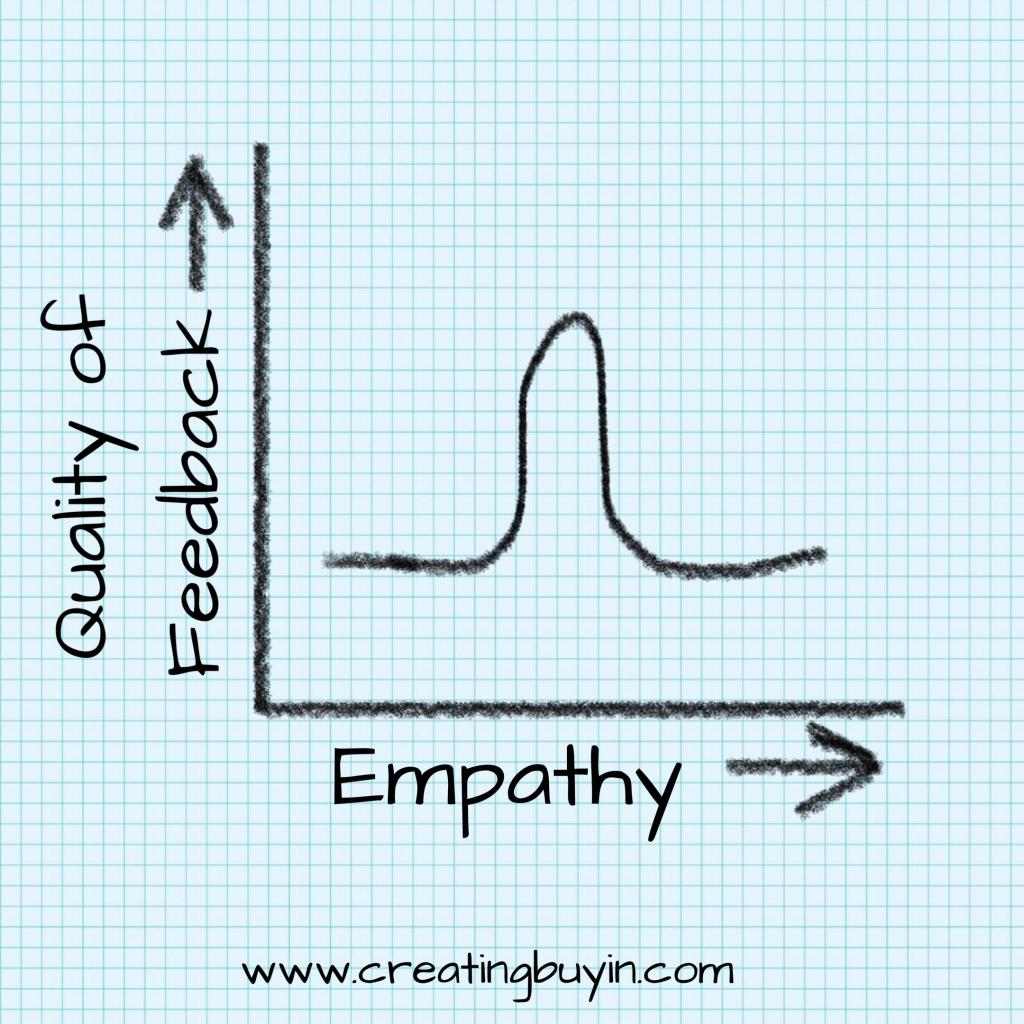Priming and Delivering Empathetic Feedback


What is EQ:
eating-buy in process in the future, but for now we’re going to look at it in the light of the feedback delivery process.
 nt people are tuned into what others are feeling and, as a result, pivot their approach socially. The five facets of Emotional Intelligence are Empathy, Social Skills, Motivation, Self-Regulation, and Self Awareness. We’re going to hone in on Empathy for this discussion. For more on Emotional Intelligence read the HBR 10 Must Reads
nt people are tuned into what others are feeling and, as a result, pivot their approach socially. The five facets of Emotional Intelligence are Empathy, Social Skills, Motivation, Self-Regulation, and Self Awareness. We’re going to hone in on Empathy for this discussion. For more on Emotional Intelligence read the HBR 10 Must ReadsEmpathy, or “How would YOU like to here this feedback”
“If you are clear in your own mind about how your feedback will be helpful, it will come across to the other person naturally. But if you don’t understand why your feedback is helpful, how will the person receiving it?” – Kim Scott Radical Candor

Priming the Pumps

Priming Positively and Negatively
Priming Positively: Leading with Praise
To prime positively, we’ll start out our feedback with something positive. An example here is POS feedback or Praise, Opportunity, Suggestion.
- Praise – this is the “priming” section of the conversation where we mention something they’re doing great but is relevant to the whole message.
- Opportunity – This is the message and what you feel they need to work on
- Suggestion – This is how the person can fix whatever they’re opportunity is. This part is collaborative and always works better when they come up with the solutions themselves.
POS feedback can be a great way to get your conversation started by “priming it” with some positive comments. These positive comments will have to be somewhat relative to the “opportunity” section though. You can’t go in and tell someone they’re great at keeping their car clean and then hit them with their opportunity.
Priming Negatively: “Defusing” or “Taking the sting out of it”
“Remember the amygdala, the part of the brain that generates fear in reaction to threats? Well, the faster we can clear the road of obstacles, the quicker we can generate feelings of safety, well being and trust.
How do you do this?  We do this by “labeling the fears” Chris says. “Labeling is a way of validating someones emotion by acknowledging it.” Before delivering the feedback take time to yourself to do an “accusation audit”, where you’ll list out what this person is going to say to retaliate your feedback and how this person is going to feel while hearing this information. You’re going to need to know who this person is and what their history is with the team before something like this.
We do this by “labeling the fears” Chris says. “Labeling is a way of validating someones emotion by acknowledging it.” Before delivering the feedback take time to yourself to do an “accusation audit”, where you’ll list out what this person is going to say to retaliate your feedback and how this person is going to feel while hearing this information. You’re going to need to know who this person is and what their history is with the team before something like this.
IF YOU'RE NOT READING, YOU'RE BEHIND
Conclusion



